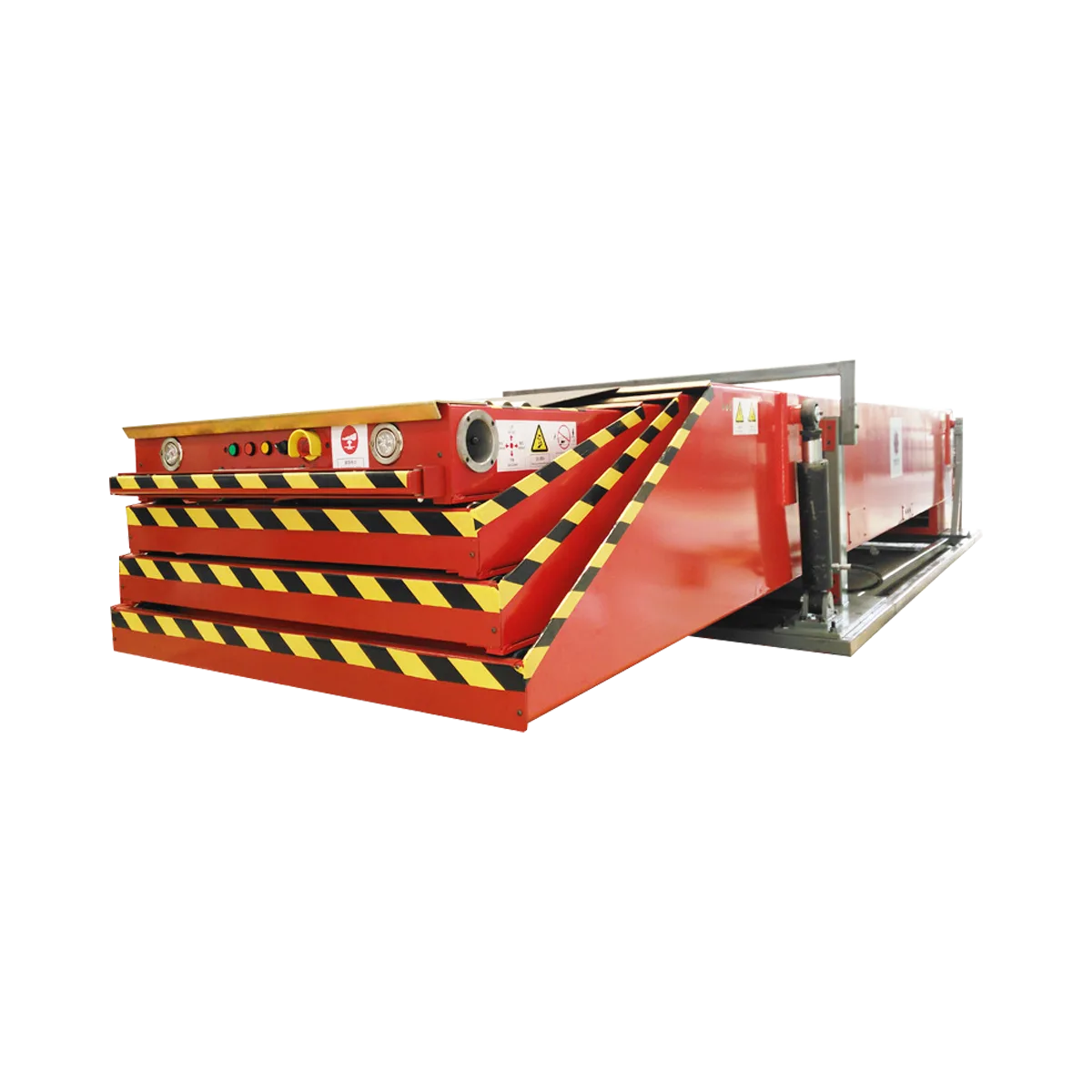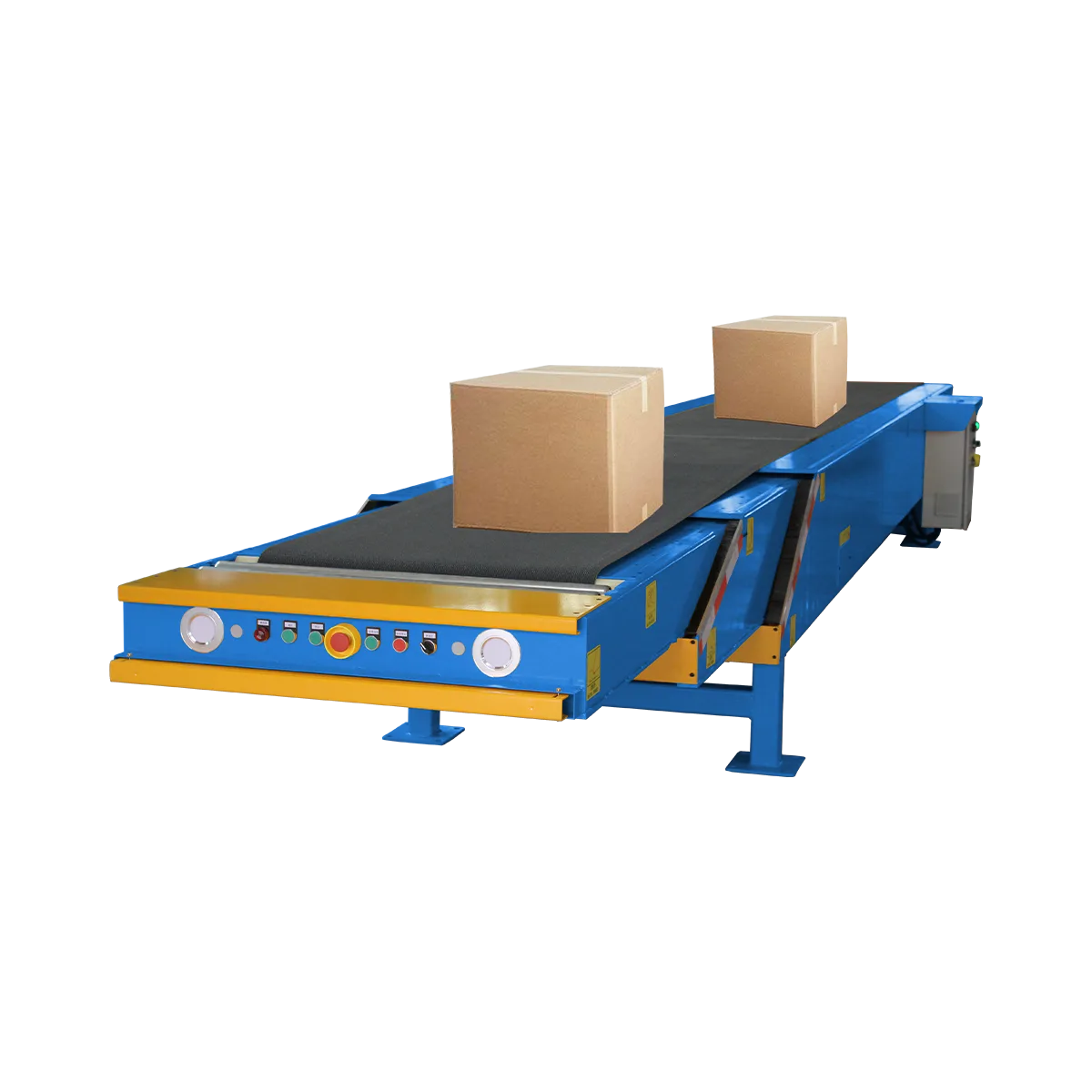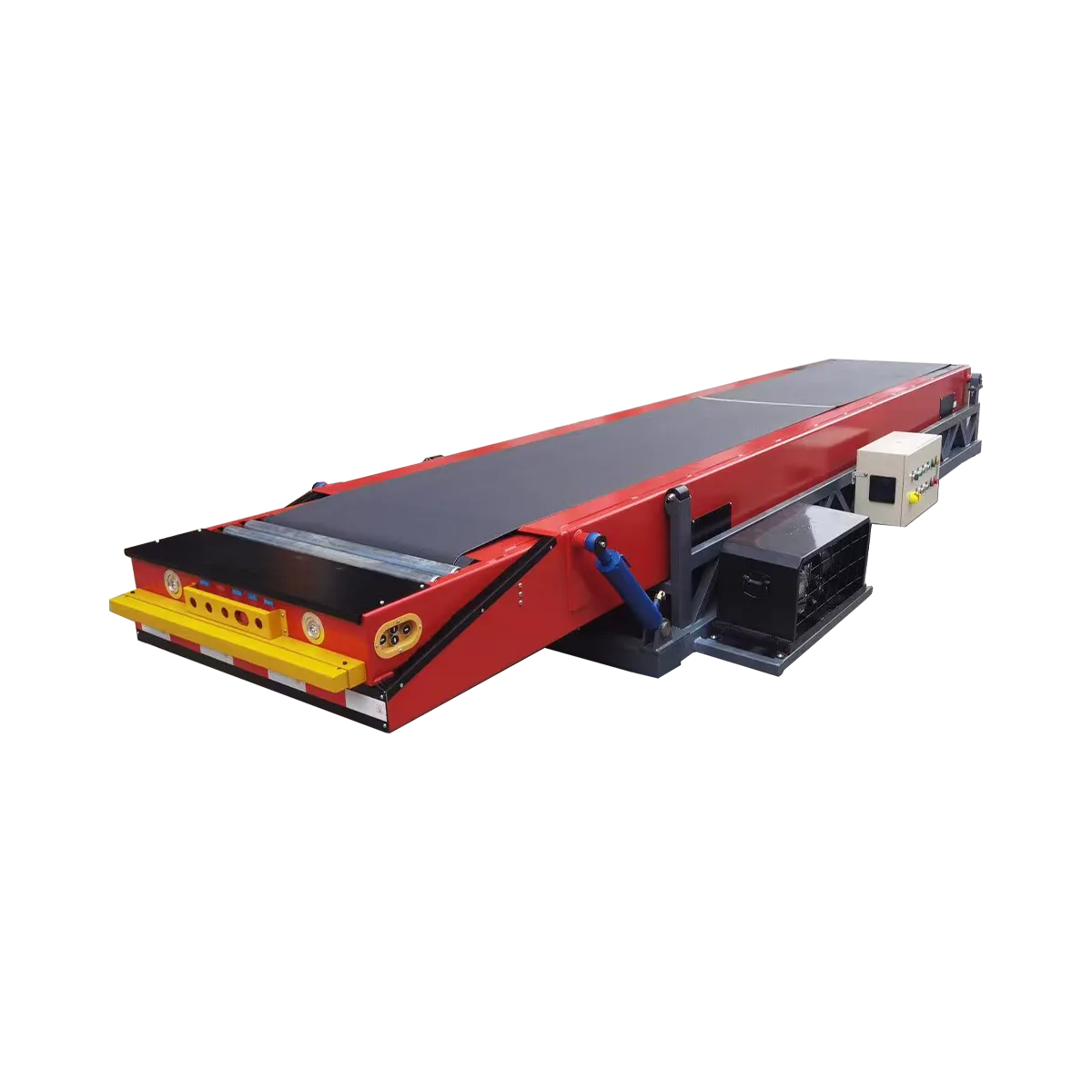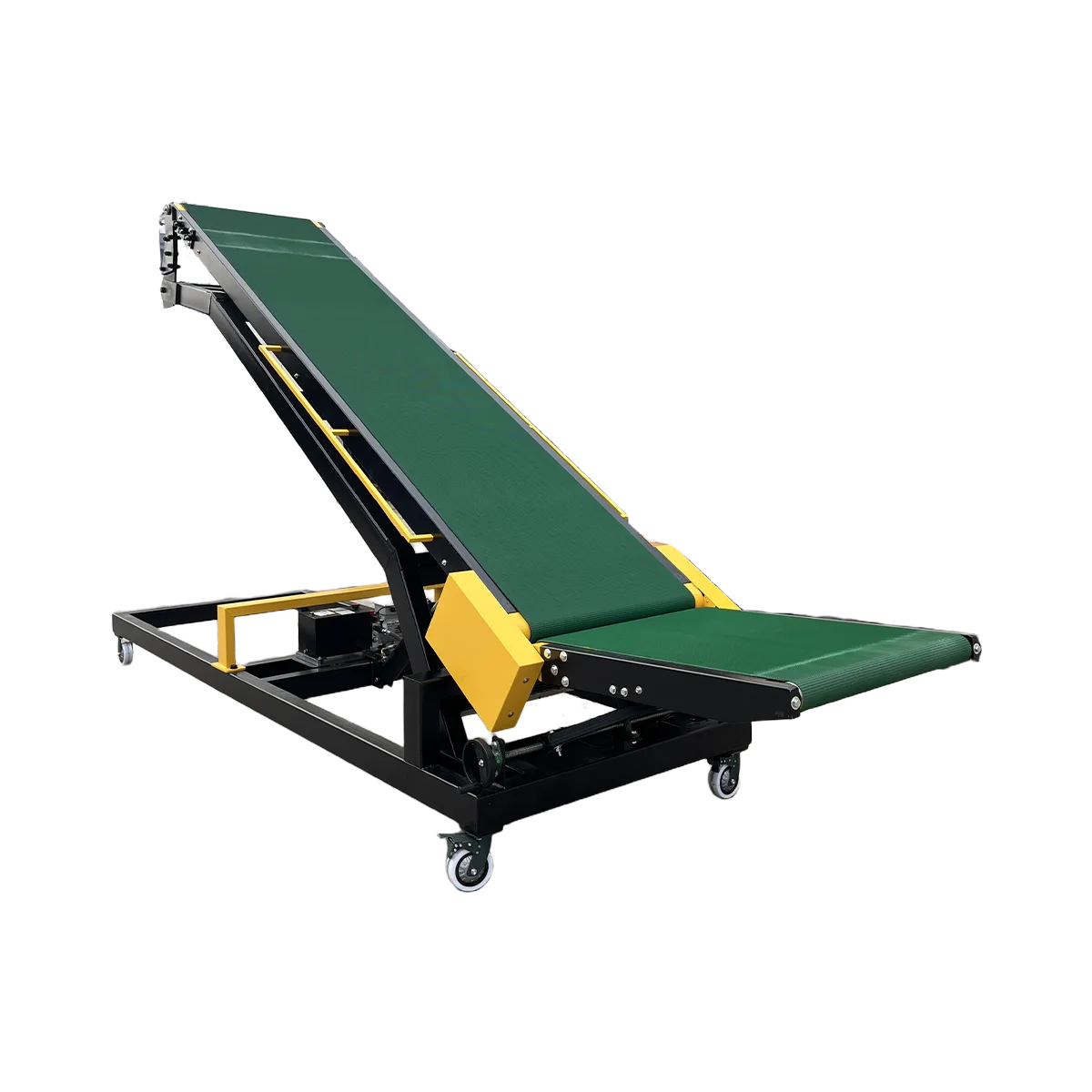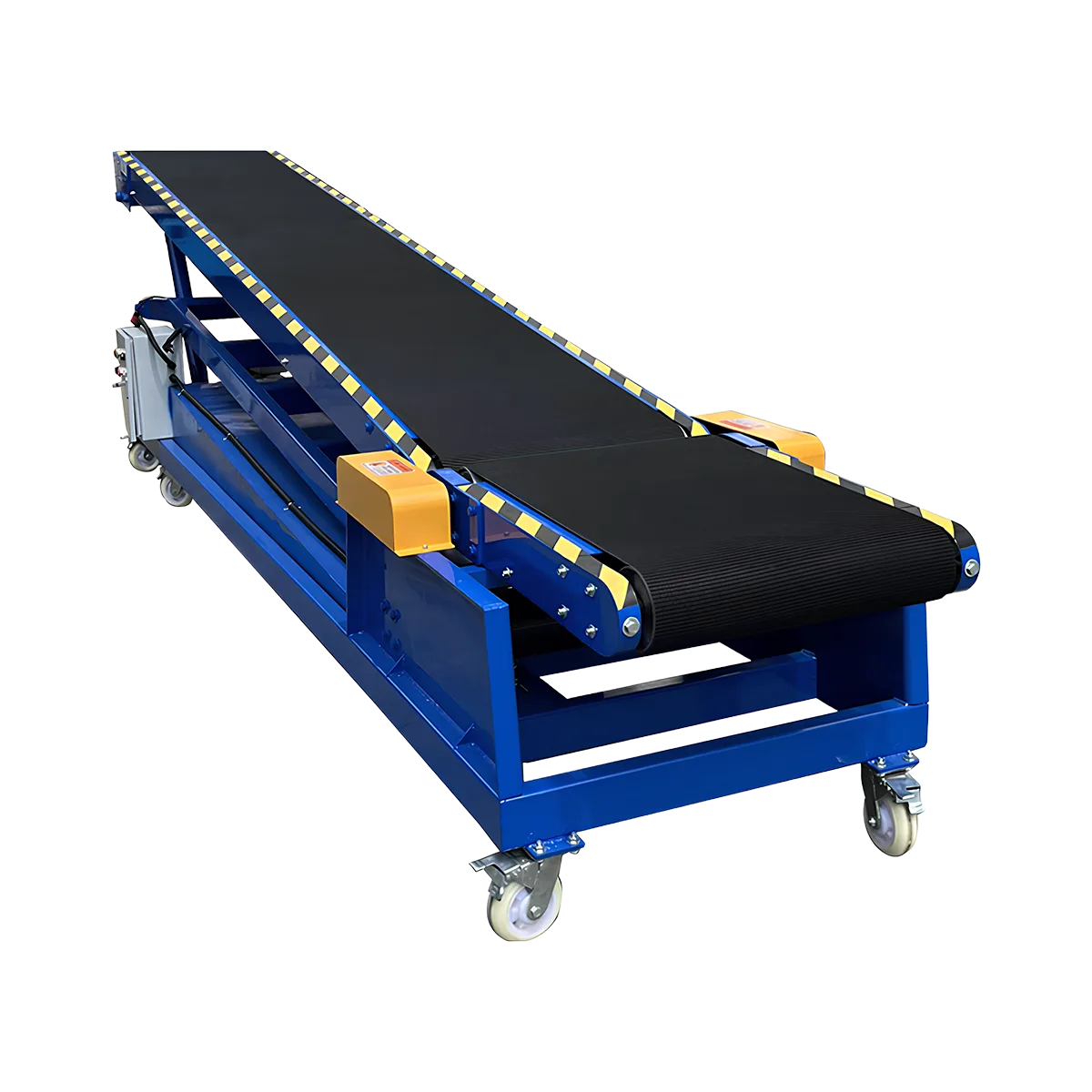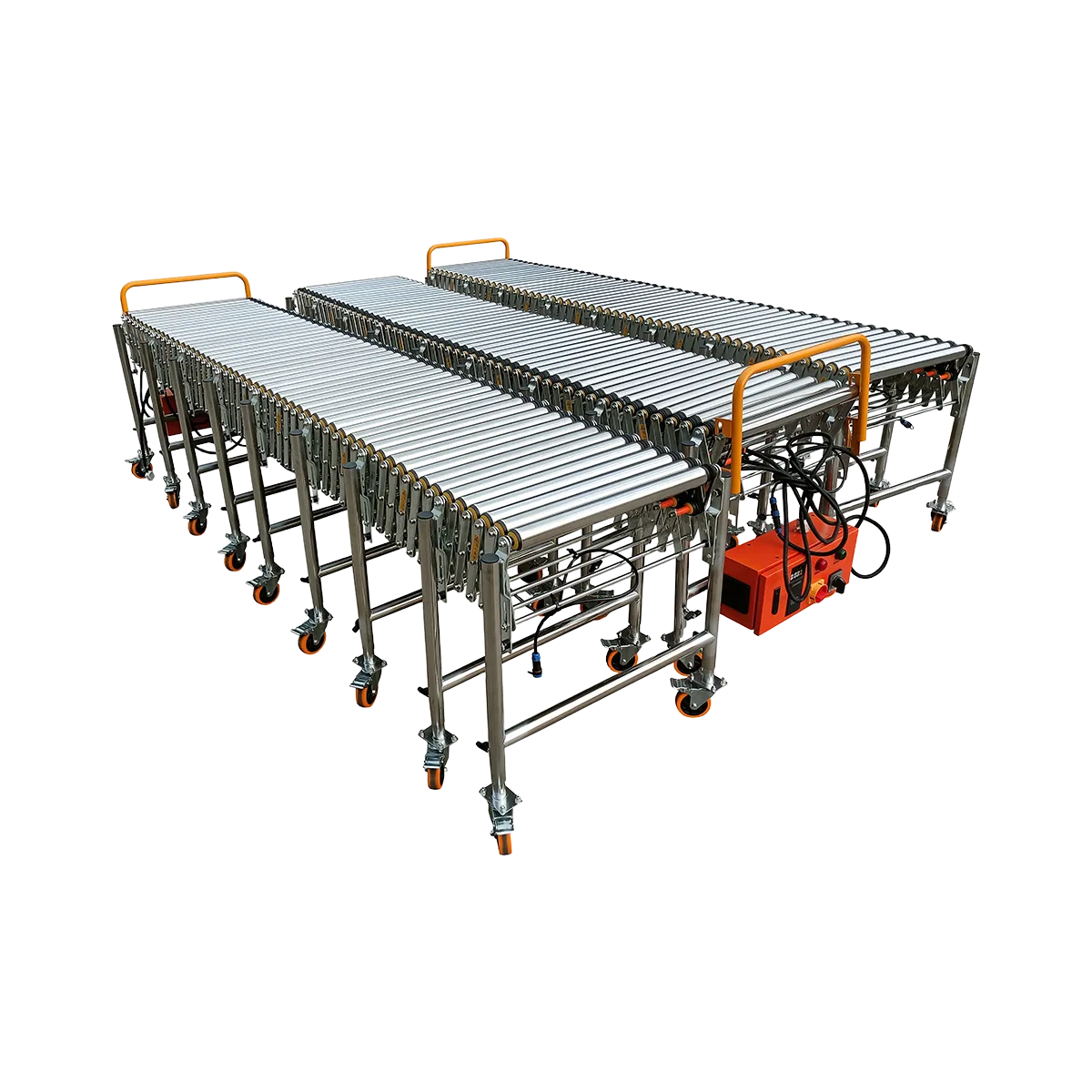How to Choose Between Telescopic, Hydraulic, and Flexible Conveyors
Struggling to choose between telescopic, hydraulic, and flexible conveyors? This guide helps warehouse managers select the perfect conveyor system for efficiency, budget, and operational needs.
Related Products
-
TeleScopic Conveyor – 4 SectionsCollapsed LengthExtended LengthLoad Capacity
60 kg/m
Applicable GoodsFlat-bottomed Goods
Bagged Goods
-
TeleScopic Conveyor – 3 SectionsCollapsed LengthExtended LengthLoad Capacity
60 kg/m
Applicable GoodsFlat-bottomed Goods
Bagged Goods
-
TeleScopic Conveyor – 2 SectionsCollapsed LengthExtended LengthLoad Capacity
60 kg/m
Applicable GoodsFlat-bottomed Goods
Bagged Goods
-
Hydraulic Conveyor – Large – 7900 mm LengthCollapsed LengthExtended LengthLoad Capacity
80 kg/m
Applicable GoodsFlat-bottomed Goods
Bagged Goods
-
Hydraulic Conveyor – Medium – 7000 mm LengthCollapsed LengthExtended LengthLoad Capacity
80 kg/m
Applicable GoodsFlat-bottomed Goods
Bagged Goods
-
Powered Roller Conveyor – Multi-wedge Belt Driven – 2000 mm/SectionCollapsed Length
700 mm
Extended Length2000 mm
Load Capacity100 kg/m
Applicable GoodsFlat-bottomed Goods
-
Powered Roller Conveyor – Multi-wedge Belt Driven – 3000 mm/SectionCollapsed Length
1050 mm
Extended Length3000 mm
Load Capacity80 kg/m
Applicable GoodsFlat-bottomed Goods
When it comes to optimizing loading and unloading operations in warehouses and distribution centers, three conveyor solutions stand out: telescopic conveyors, hydraulic conveyors, and flexible conveyors. Each offers unique advantages designed to address specific operational challenges. This conveyor selection guide will help you determine which system best suits your material handling needs.
Understanding Your Options: Three Powerful Solutions
Telescopic Conveyors
Telescopic conveyors are extendable belt conveyor systems designed for high-volume loading and unloading operations. These systems can extend deep into containers or trucks, with models available in 2, 3, 4, or 5 sections that can reach up to 17 meters when fully extended.
Key Features:
- Extension capability up to 17 meters (5-section models)
- Load capacity of 60 kg/m²
- Conveying speed of 10-40 m/min
- Bidirectional operation
- Fixed installation with optional mobility features
Hydraulic Conveyors
Hydraulic conveyors solve the height difference challenge between ground level and truck beds or containers. Using hydraulic pressure to create an adjustable incline, these systems can elevate goods from floor level to vehicle height.
Key Features:
- Height adjustment from 700mm to 2400mm
- Load capacity of 50-80 kg/m
- Four size options from Micro (3700mm) to Large (7900mm)
- Upper frame can accommodate additional roller conveyors
- PVC anti-slip belting for secure transport
Flexible Conveyors
Flexible conveyors include various extendable roller and skate wheel designs that offer versatility and mobility. These include:
- Powered roller conveyors: Motorized systems with extendable designs
- Powered rubber roller conveyors: Specialized for soft packaging with PVC-coated rollers
- Gravity roller conveyors: Non-powered systems using gravity for transport
- Gravity skate wheel conveyors: Lightweight wheel-based systems with a remarkable 1:5 extension ratio
Key Features:
- Extension ratios from 1:3 to 1:5
- Various load capacities (50-120 kg/m)
- Adjustable height options
- Highly mobile with locking casters
- Both powered and non-powered options
Scenario Analysis: Choosing the Right System
When to Choose Telescopic Conveyors
Telescopic conveyors excel in high-volume, fixed-location operations where speed and efficiency are paramount:
- High-volume logistics centers handling 3000+ packages per hour
- Fixed loading dock environments with standard heights
- Deep-reach requirements for full container access
- Continuous operation facilities with minimal downtime
- Permanent installation locations where space isn’t constrained
Real-world application: A distribution center processing multiple containers daily would benefit from telescopic conveyors’ ability to quickly extend into containers, dramatically reducing loading/unloading time while minimizing labor requirements.
When to Choose Hydraulic Conveyors
Hydraulic conveyors are ideal when dealing with ground-level loading or multiple truck height requirements:
- No loading dock facilities requiring ground-to-truck transport
- Variable vehicle heights needing flexible elevation adjustment
- Combined with roller conveyors for extended reach into vehicles
- Facilities with space constraints that prevent ramp construction
- Operations handling up to 2000 packages per hour
Real-world application: A warehouse without a dedicated loading dock would use a hydraulic conveyor to bridge the height gap between the ground and truck bed, then extend its reach by mounting roller conveyors on the upper frame.
When to Choose Flexible Conveyors
Flexible conveyors offer the greatest adaptability for operations with changing needs or space constraints:
- Multiple dock doors requiring equipment mobility
- Limited storage space when not in use
- Budget-conscious operations seeking cost-effective solutions
- Temporary or seasonal operations needing easy deployment
- Varied package types requiring different conveyor configurations
Real-world application: A facility with multiple loading areas would benefit from flexible conveyors that can be quickly moved between locations, adjusted to different heights, and stored compactly when not in use.
Cost Comparison
Understanding the investment required for each system helps align your choice with budgetary constraints.
Initial Investment Ranges
| Conveyor Type | Entry-Level Investment | Mid-Range Investment | Premium Configuration |
|---|---|---|---|
| Telescopic | Higher | Higher | Highest |
| Hydraulic | Medium | Medium-High | High |
| Flexible | Lower | Medium | Medium-High |
Operating Costs
Telescopic Conveyors:
- Higher power consumption
- Lower labor requirements
- Longer service life (8-10 years)
- Lower per-package handling cost for high volumes
Hydraulic Conveyors:
- Moderate power consumption
- Moderate labor requirements (typically 2 operators)
- 5-10 year service life with proper maintenance
- Hydraulic system requires periodic oil checks and replacement
Flexible Conveyors:
- Lowest power consumption (gravity models require none)
- Higher labor requirements for manual handling
- 5-10 year service life
- Lowest maintenance costs (especially for non-powered models)
Maintenance Requirements
Telescopic Conveyors:
- Belt inspection and tension adjustment (monthly)
- Bearing lubrication (quarterly)
- Electrical system checks (quarterly)
- Belt replacement (2-3 years)
Hydraulic Conveyors:
- Hydraulic oil checks (monthly)
- Hydraulic oil replacement (6-12 months)
- Belt tension checks (weekly)
- Hydraulic seal inspection (quarterly)
Flexible Conveyors:
- Roller/wheel inspection (weekly)
- Frame and leg connection checks (quarterly)
- Bearing lubrication (powered models, quarterly)
- Drive belt tension (powered models, monthly)
For operations handling over 1000 packages daily, both hydraulic and telescopic conveyor systems typically achieve return on investment within 6-12 months through labor savings and efficiency improvements.
Future-Proofing Considerations
Your choice of conveyor system should accommodate not just current needs but anticipate future operational changes.
Business Growth Scenarios
Expanding Package Volume:
- Telescopic conveyors handle the highest throughput but are less flexible for relocation
- Multiple flexible conveyors can be added incrementally as volume increases
- Hydraulic conveyors work well for moderate growth but may become bottlenecks at extremely high volumes
Changing Facility Layout:
- Flexible conveyors adapt most easily to layout changes
- Hydraulic conveyors can be relocated with some effort
- Telescopic conveyors require significant planning for relocation
Seasonal Fluctuations:
- Flexible conveyors can be deployed or stored as needed
- Additional flexible conveyors can supplement fixed systems during peak periods
- Gravity models offer cost-effective capacity expansion for temporary needs
Changing Logistics Needs
New Vehicle Types:
- Hydraulic conveyors accommodate varying vehicle heights
- Telescopic conveyors work best with standard container heights
- Flexible conveyors can adapt to different vehicle configurations
Product Mix Changes:
- Powered rubber roller conveyors handle soft packaging effectively (up to 120 kg/m)
- Multi-wedge belt driven powered roller conveyors handle heavier boxed items (up to 100 kg/m)
- Gravity systems work well for standardized packaging but struggle with irregular items
Technology Integration:
- All systems can work alongside automated systems
- Telescopic conveyors offer the most straightforward integration with high-volume sortation systems
- Flexible systems provide adaptability for evolving technology implementations
Conclusion: Making the Right Choice for Your Operation
Selecting between telescopic, hydraulic, and flexible conveyors ultimately depends on your specific operational requirements:
- Choose telescopic conveyors when high-volume efficiency and deep-reach capability are top priorities and your operation has fixed loading docks with consistent vehicle heights.
- Choose hydraulic conveyors when you need to bridge height differences between ground level and vehicles, especially in facilities without dedicated loading docks.
- Choose flexible conveyors when adaptability, mobility, and cost-effectiveness are key considerations, particularly for operations with multiple loading areas or changing configurations.
The right conveyor choice dramatically impacts operational efficiency, with potential labor savings of 2-4 workers per loading station and efficiency improvements of 20-50% compared to manual methods. By matching your specific requirements with the appropriate conveyor technology, you’ll optimize your loading and unloading operations for years to come.
Frequently Asked Questions
Can telescopic conveyors and hydraulic conveyors be used together?
No, these systems are designed for different applications and cannot be effectively combined. Telescopic conveyors work best at fixed loading docks, while hydraulic conveyors are designed to bridge height differences where loading docks don’t exist.
What is the minimum ceiling height required for these conveyor systems?
Telescopic conveyors require approximately 1 meter clearance above their operating height. Hydraulic conveyors need sufficient space to accommodate their maximum extended height (up to 2400mm). Flexible conveyors have the lowest height requirements, with adjustable supports accommodating various ceiling constraints.
How quickly can these systems be deployed for temporary operations?
Flexible conveyors can be deployed in minutes. Hydraulic conveyors typically require 1-2 hours for positioning and setup. Telescopic conveyors are not designed for temporary deployment and require proper installation.
What happens if power is lost during operation?
Gravity conveyors will continue to function as they don’t require power. Powered systems will stop, but most feature manual release mechanisms to complete in-progress unloading. Telescopic conveyors cannot be manually extended or retracted during power outages.
Can these conveyor systems handle fragile items?
Yes, all systems can handle fragile items when properly configured. Powered rubber roller conveyors are particularly suitable for delicate packages due to their PVC coating. Speed control is essential—all powered systems offer adjustable speeds to accommodate fragile items.
Table of Contents
Recent Posts
Discover effective solutions for conveyor system integration between fixed sorters and loading docks. Bridge the automation gap with flexible, mobile conveyor systems for seamless logistics.
Master seasonal warehouse solutions with our peak season logistics guide. Learn how to expand loading capacity, manage high volumes, and implement flexible systems when you need them most.
Discover the most efficient frozen goods conveyor system for loading refrigerated trucks while maintaining cold chain integrity at your cold storage warehouse.
Optimize your wholesale club logistics with heavy-duty roller conveyor systems designed for bulk goods handling. Improve efficiency in Costco style warehouses with our solutions.
Optimize tire handling in automotive logistics with specialized conveyor for tires that provides superior grip and controlled movement, minimizing manual handling and increasing efficiency.
